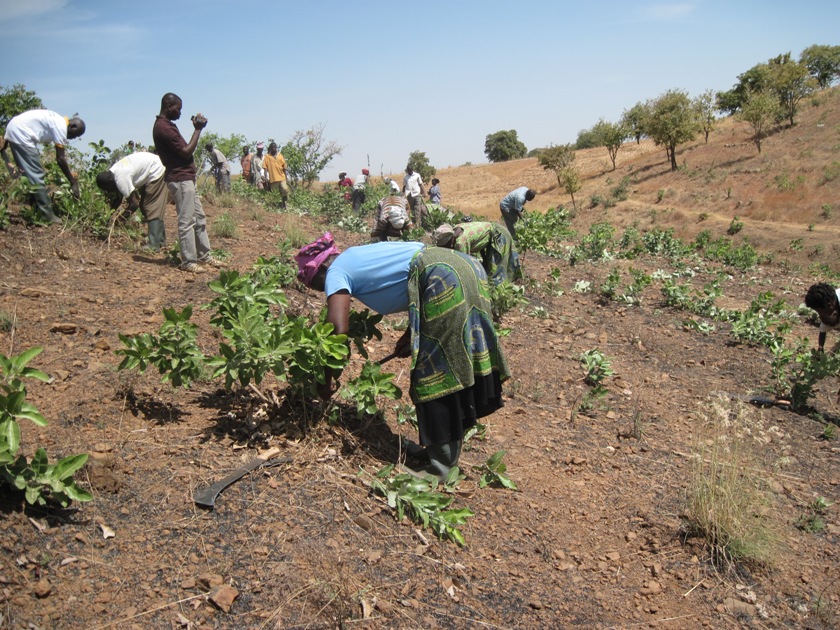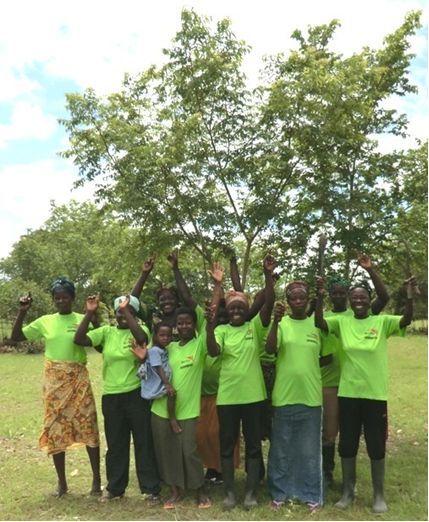Farmer-managed natural regeneration
Setting the scene
The Talensi Disrict is located in the environmentally fragile, dryland area of northern Ghana. Vulnerability to food crises and climate change, exacerbated by population growth, has diminished livelihood security and quality of life in the Talensi District.
Over recent decades, annual rainfall volumes have declined, forest cover and associated indigenous biodiversity have disappeared and arable soils have lost fertility. The results are region-wide food shortages and a population that increasingly struggles to meet its needs.
Project overview
The Talensi farmer-managed natural regeneration (FMNR) project was a pioneering collaboration between World Vision Australia and World Vision Ghana implemented in the Talensi Area Development Program over a three-year period, commencing in July 2009.
In the long-term, the project aimed to improve the livelihoods of people in the Talensi Area Development Program by increasing income levels and the number of households with food all year round. In order to achieve this goal, the project encouraged farmers to adopt sound natural resource management (NRM) practices. These practices aimed to rebuild household resilience by reversing losses in forest cover, indigenous biodiversity and soil fertility.

Primarily, the project promoted community mobilisation around FMNR to restore multi-purpose indigenous trees to farmland and community-managed forests. FMNR encourages farmers to identify regrowth from the stumps of cut-down trees and to protect and prune the regrowth into new trees.
The project also promoted complementary NRM techniques by:
- using crop residues as fertiliser and fodder;
- providing market information training for farmers;
- developing local laws to support good environmental management;
- promoting bushfire control by establishing and training community fire-fighting volunteers;
- developing supplementary income and resource generation activities;
- providing training for the adoption of fuel-efficient wood stoves.
Key benefits of the project
FMNR adoption:
- 180 lead farmers (90 women and 90 men) trained in and adopted FMNR and related NRM techniques, and trained others in the community
- 574 households (37 percent of all households) adopted the FMNR approach
- 157 households adopted fuel-efficient stoves (90 were distributed to HHs by the project and the remainder were spontaneous adoptions)
Key livelihood outcomes at a glance:
- 46 percent of FMNR adopters observed that FMNR practices generate more wild fruits and food (fruits, nuts, rabbits and partridges). Without FMNR practices, only 4.5 percent believed wild food availability would increase.
- 95 percent of FMNR HHs harvest all or some of their firewood from their own fields, compared to 21 percent of non-FMNR households
- FMNR households gather, on average, 50 percent of all firewood from forests, compared to 67 percent for non-FMNR households.
- FMNR households gather, on average, 17 percent of all rafters from their own fields, compared to 70 percent for non-FMNR households.
- The recovered forest areas provide better access to herbal medicines, in terms of both availability and proximity.
- The FMNR regrowth trees have some reported effect on protecting fields from severe wind storms, and the additional young trees serve as emergency supplies to repair damaged houses.
- Slowing wind speeds around human habitations as a result of fire suppression allows grass to be retained in fields and leaves on trees.
- The project created avenues for people to work together to achieve common goals in ways that were not experienced previously. Community unity is now extending from collaboration on organised activities to cooperation on one another’s farmland.
- Better shade, beauty and comfort of the community’s surroundings ranked as the fourth most frequent response to an open-ended question asking what respondents thought was the greatest benefit of the project.
- Children and adults now have an increased sense of optimism for the future of their farming and their communities’ survival.
- Due to the local availability of fodder, boys are less likely to be removed from school to herd cattle to pastures.
- Increased access to natural resources has led to the diversification of income and savings, as people do not have to purchase as many natural resources as they did previously.
- Asset creation (trees): In Ghanaian Cedi (GHS) a rafter, hewn from a tree trunk of a young tree, is worth around GHS4 (US$2.13). Thus, even in the short-term, the additional 393,410 FMNR trees have created assets worth GHS1,573,640 (US$838,750), excluding the value of the trees’ products, such as fruit, nuts and seeds.
Project location:
Talensi District, Upper East Region of Ghana, West Africa. The project involved nine of the Talensi District’s 69 communities, including Yameriga, Tongo-Beo, Yinduri, Wakii, Balungu, Shia, Sepaat, Namolgo and Yagzore.
Target population: Direct participants included 180 farmers (90 men and 90 women) who engaged intensively in FMNR, plus an addition 940 who attended some form of training. Total beneficiaries included the 1,472 households in the nine project communities, containing approximately 12,000 individuals.
Area: 500 square kilometres
Project partners:
- Australian Government Overseas Aid Program (AusAID) (provided the majority of funding)
- World Vision Australia
- World Vision Ghana
- Talensi Area Development Program
- Ministry of Food and Agriculture (Ghana)
- National Forestry Research Institute (Ghana)
- National Disaster Management Organisation (Ghana)
- Information Services Department (Ghana)
- Ghana National Fire Service
- Community Development and Advocacy Centre (Ghana)
- Village chiefs and farming men and women
Re-greening landscapes:
- 161 hectares under new forest cover with average tree densities of 2334 per hectare (from a baseline of five per hectare)
- 336 hectares of farmland under FMNR management with average tree densities of 57 per hectare (from a baseline of five per hectare)
- 19,024 additional indigenous FMNR trees on farmland by July 2012
- 376,871 additional indigenous FMNR trees in forest areas by July 2012
- 94 percent of FMNR adopters reported an increase in soil fertility (against 26 percent among the comparison group), with 75 percent of adopters reporting high increases (against only six percent of the comparison group)
- 66 percent of FMNR adopters reported improvement in soil erosion (against 17 percent in the comparison group), with 47 percent of adopters reporting “a lot” of improvement (against eight percent of the comparison group)

